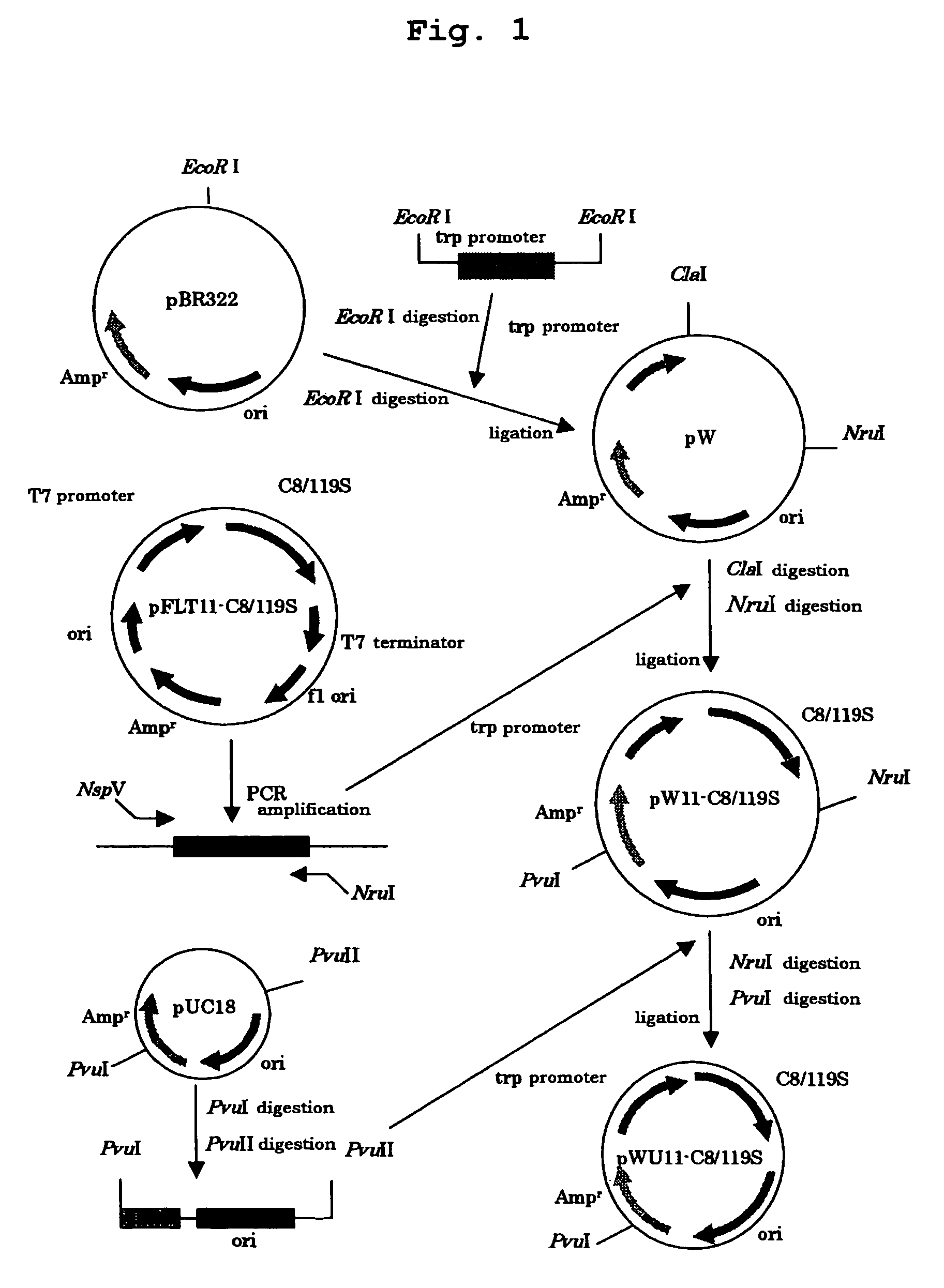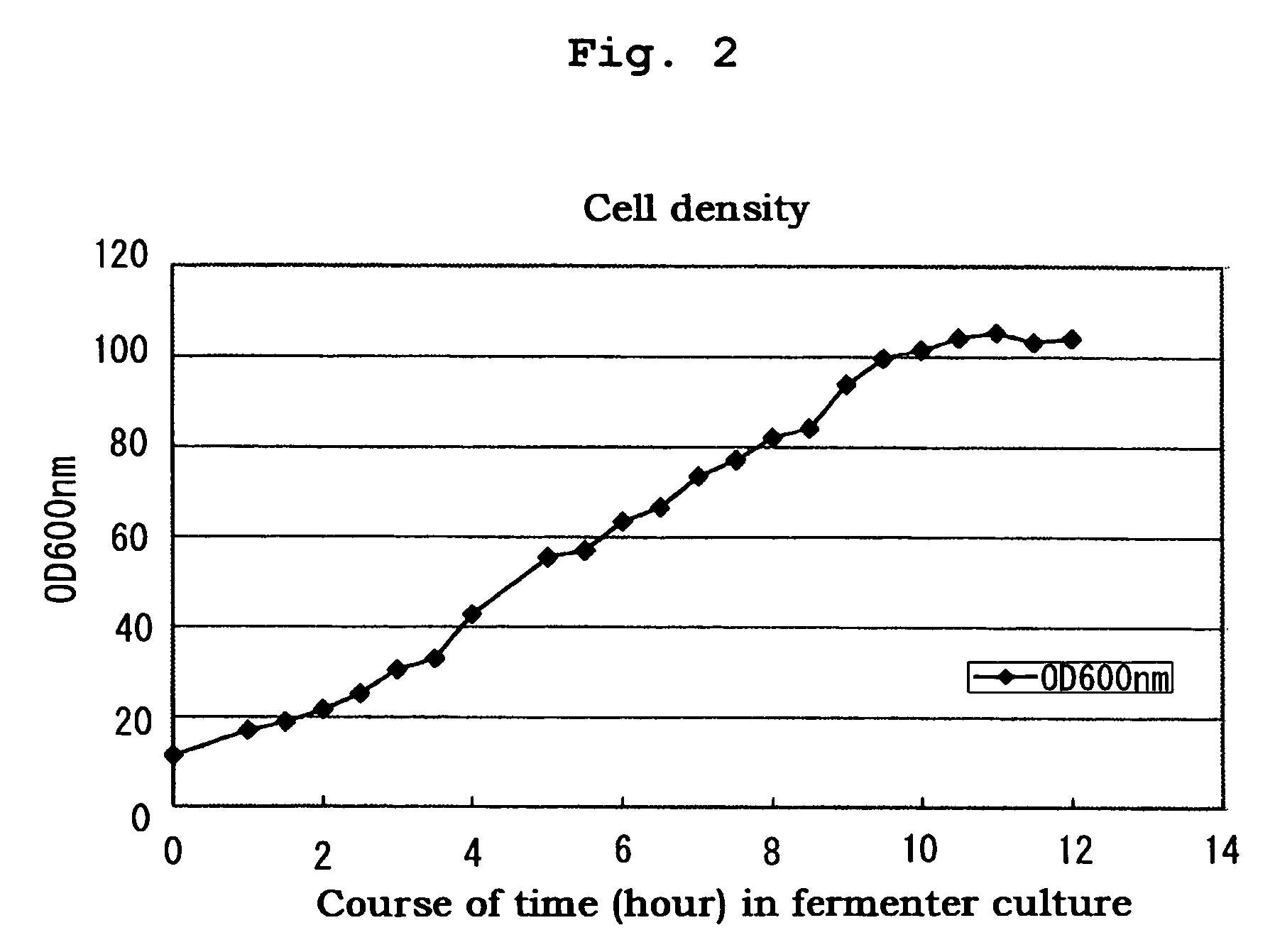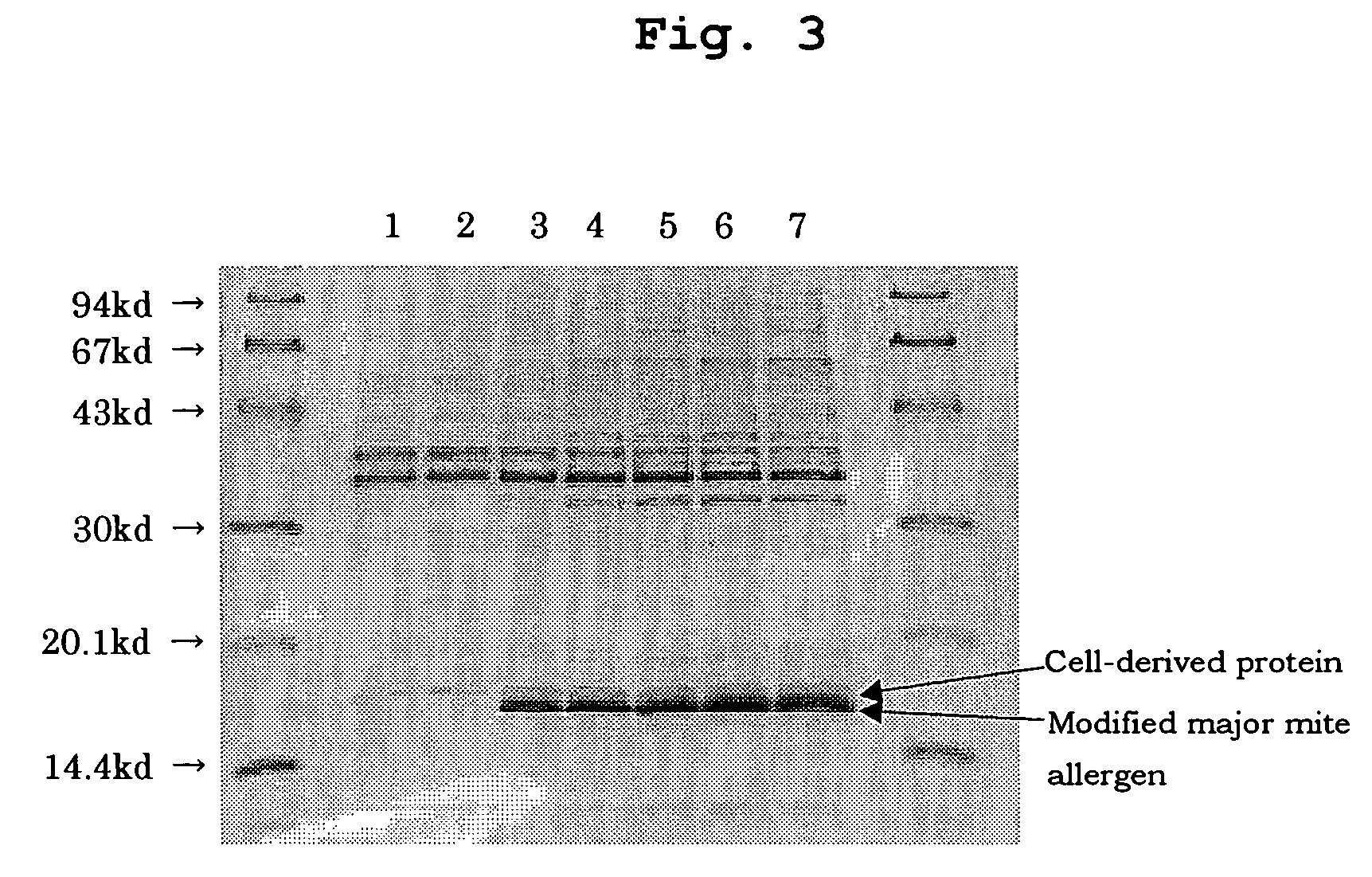Method for purifying modified major mite allergen
a technology of major mites and purified materials, which is applied in the field of purifying a major mite allergen, can solve the problems of inability to radically cure allergic diseases, difficult stable provision of a large quantity of allergens, and serious adverse side effects, and achieves the effect of reducing binding, improving purity, and reducing the quantity of the desired major mite allergen
- Summary
- Abstract
- Description
- Claims
- Application Information
AI Technical Summary
Benefits of technology
Problems solved by technology
Method used
Image
Examples
example 1
Preparation of Recombinant E. coli Producing Modified Major Mite Allergen
[0057]First, a gene fragment was constructed in which a gene fragment (C8 / 119S) of a modified major mite allergen (a modified major mite allergen Der f 2 wherein both the cysteine residues at 8-position and 119-position in Der f 2 are replaced with serine residues) was bound downstream of Trp promoter as described below.
[0058]A gene fragment containing Trp promoter was prepared according to the method reported by Ikehara et al. (Proc. Natl. Acad. Sci. USA, Vol. 81, pp. 5956-5960, 1984). To the 5′ and 3′ ends of the resulting tryptophan promoter gene fragment were bound EcoRI linkers (TaKaRa) and the obtained gene fragment was inserted at the EcoRI site of pBR322 to prepare a recombinant vector pW.
[0059]Next, a nucleic acid fragment containing a modified major mite allergen gene (C8 / 119S) was obtained by PCR using as a template a plasmid pFLT11-C8 / 119S (Japanese Patent Publication No. 253851 / 1994) bearing said m...
example 2
Purification of Modified Major Mite Allergen
(1) Pretreatment of Culture (Recovery of Inclusion Bodies)
[0063]Ten milliliters of the glycerol stock of the strain producing the desired modified major mite allergen were inoculated to 1.5 L of LB medium and shake-cultured at 35° C. for 8 hours to prepare a cell suspension. The cell suspension was inoculated to 250 L of LB medium for aeration culture at 25° C. overnight. Then, the culture temperature was raised to 37° C. and aeration culture was further continued for 8 to 12 hours, while adding an amino acid and glucose depending on proliferation of the cells, to allow for production of a modified major mite allergen within the cells as inclusion bodies (FIGS. 2 and 3).
[0064]The culture (about 300 L) was concentrated to about 100 L using MF membrane (Microza; ASAHIKASEI) to recover the E. coli cells. The recovered E. coli cells were diluted 4-fold with deionized water and then concentrated to about 100 L with the MF membrane. The procedur...
example 3
Analysis of Modified Major Mite Allergen
(1) Western Blot Analysis
[0071]A modified major mite allergen was detected with Western blotting. Samples were diluted to an appropriate concentration with water for injection and, under non-reductive condition and after reduction with 2-mercaptoethanol, added to SDS-polyacrylamide gel (Funakoshi Co., Ltd.) for electrophoresis. The electrophoretic gel was immersed in a Trans electrophoresis buffer (10 mM CAPS containing 10% methanol) for 5 minutes and then the proteins in the gel were transferred to PVDF membrane with Trans Western electrophoresis transfer devise. After transfer, the PVDF membrane was immersed in 10 mM Tris buffer containing 2% bovine serum albumin, 0.1% Tween 20 and 0.5 M sodium chloride for blocking at 37° C. for 2 hours. Then, 5 μg / ml of anti-Der f 2 monoclonal antibody was added to the PVDF membrane for reaction at 37° C. for 2 hours. After washing the PVDF membrane five times in total with 10 mM Tris buffer containing 0.1...
PUM
| Property | Measurement | Unit |
|---|---|---|
| pH | aaaaa | aaaaa |
| pH | aaaaa | aaaaa |
| pH | aaaaa | aaaaa |
Abstract
Description
Claims
Application Information
 Login to View More
Login to View More - R&D
- Intellectual Property
- Life Sciences
- Materials
- Tech Scout
- Unparalleled Data Quality
- Higher Quality Content
- 60% Fewer Hallucinations
Browse by: Latest US Patents, China's latest patents, Technical Efficacy Thesaurus, Application Domain, Technology Topic, Popular Technical Reports.
© 2025 PatSnap. All rights reserved.Legal|Privacy policy|Modern Slavery Act Transparency Statement|Sitemap|About US| Contact US: help@patsnap.com



